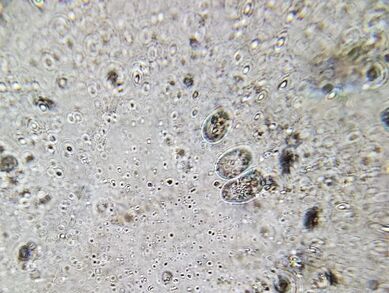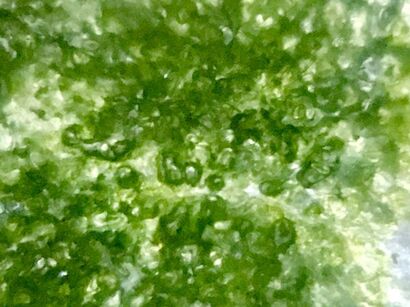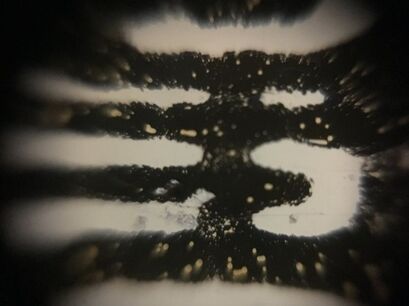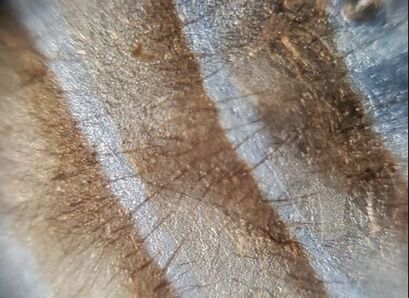What we did ?
We reached out for outreach opportunities and came across the American Society of Cell Biology (ASCB) COMPASS outreach grant which enables funding for post-docs and graduate students to do outreach activities. We proposed an outreach project utilizing our love and expertise in microscopy and ingenious Foldscope, developed by Manu Prakash and Jim Cybulski. We felt that this would be an fantastic tool for students, encouraging them to learn how to make observations and hypotheses. The main objective was to provide students a framework for understanding the fundamentals of scientific method by observing the world around them.
We were very excited when Ankita Jha received the 2020 ASCB COMPASS grant. We developed a four part lesson plan, largely based on the samples we thought most students will have access to. We received immense interest from kids and their parents, but we had the budget for 30 foldscopes and selected the first 30 students. After they received their foldscopes at home, for the next four weeks we met for an hour, to cover topics like ecology, cells and tissues and chemistry and instructed them on how to assemble and use the foldscope for their observations. In addition, students also enjoyed a virtual tour of our lab at NIH where they could compare the differences between foldscopes and spinning disc confocal microscope.
We were amazed by the dedication and enthusiasm kids from the ages of ~ 9 to 13 years demonstrated to us! They were extremely inquisitive and exceptional in their observations, many keeping very detailed notes and drawings. This whole journey was something magical for us! It began with having some fun and teaching some science to the next generation, but it has brought us all so much closer to science and to each other.
To fly this project efficiently we utilized multiple online resources. For virtual classes we used Cisco webex, for designing pamphlets and other course materials we used Canva. We used Quizizz for designing quizzes for the students and weebly for constructing our image gallery and webpage.
What instrument did we use?
|
Foldscope is a low cost, easy to assemble paper microscope that was developed to provide research and educational tool to communities across the globe. |
Fun Observations !!!
Image Gallery
ParameciumAditya Gangalum collected the rain water from the streets and observed micro-organisms floating around which we identified as paramecium. Petunia FlowerPetunias are summer flowers. Aamir Hussain here observed the petunia flower details under foldscope and saw beautiful purple pigmented cells. Bee wingBee wings are rigid making them like small plane wings. It is composed of two wings on each side. The two wings are attached together by small comb like structures called 'hamuli' that Aamir Hussain observed. Lavender leafLavender leaves are full of oil glands. They are widely used for extracting 'essential oils'. Shree Dash observed the details of lavender leaf from her garden. Hair FollicleHair follicle is a tunnel shaped structure in the epidermis of skin and hair grows from the bottom of the follicle that is supplied by nutrients from nearby blood vessels. Niranjan Chandrasekhar looked at the hair follicle and hair shaft details. BasilBasil is one the most widely used herbs in cooking and Michelle Baird was curious how it looks magnified. She could see cells full of chlorophyll. Flower pollenAnkita Jha observed stamen of the flower. Stamen of the flower has hair like structures which can help in the pollen dispersal. |
Petunia StemPetunias are summer flowers. It can be propagated by using a small piece of stem. Aamir Hussain here observed the petunia stem. Anchovy fish scaleFish scales are composed of mineral component like hydroxyapatite and organic component like collagen. Shivani Saravanan here observed anchovy scales. Leaf TrichomesTrichomes are hair like structures that grow out of leaves and stem which is often used as a defense against the herbivores. Niranjan Chandrasekhar here observed details of trichomes. GlitterGlitters are mostly aluminum metalized polyethylene terephthalate that sparkles. Michelle Baird (instructor) took this image and discussed with the class. Aloe Vera leaf The outer part the aloe-vera leaf provides rigidity to the large vacuoles in the leaf that are full of gel. Niranjan Chandrasekhar looked at the aloe-vera leaf peal. Image here show the details of the outer part. 5 dollar noteNotes have printing that you can see and feel. Michelle Baird looked a 5 dollar note details just because we are always curious!!! :) OvipositorOvipositor is a part of female copulatory organ and is very important for female Drosophila to lay eggs. Observation and image from Ankita Jha. |
RhizomeRhizome is a plant stem that makes roots and shoots from its nodes. Niranjan Chandrasekhar observed a rhizome and noticed the air pockets. Leaf peelNiranjan Chandrasekhar observed the leaf peel that has waxy layer to protect leaf and is full of chloroplast which enables it to make food. Onion CellsPlant cells are made up of rigid cell wall that are stacked together to make structures. Niranjan Chandrasekhar observed red onion cells in which he can see pigmented cells and compared it the neighboring cells. Stem sectionThe outer layer of stem is epidermis followed by cortex and vascular bundle. Niranjan Chandrasekhar here observed details of stem with the help of his mom. Bee LegBee leg is covered with hair like structures that is very useful for pollinating flowers. Aamir Hussain observed the details of bee leg. Fun fact- Bee stung him weeks ago, he got to look at his cousin. Maple leafMaple leaves have large vascular structures and beautiful orange color because of high levels of beta-carotene that absorbs blue and green light and reflect yellow and red. Sample from Michelle Baird. Body segmentationBody segmentation in organisms is evolved to enable them to perform complex and varying functions. Drosophila segmentation can be seen here. Image from Ankita Jha. |
Drawing gallery
Video gallery
|
|
|
Video recording of observations by Aakansha Vittal
Workshop Team
Ankita Jha, PhDPostdoctoral Researcher
National Heart, Lung and Blood Institute, National Institutes of Health |
Michelle BairdGraduate Student
National Heart, Lung and Blood Institute, National Institutes of Health |
Ankit Dwivedi, PhDPostdoctoral Researcher
Institute for Genome Sciences, University of Maryland School of Medicine |
Ikbal ChoudhuryGraduate Student
Department of Mechanical Engineering, Johns Hopkins University |
|
For regular updates about science and other outreach programs, follow us on Instagram (www.instagram.com/outreach.scientists/)
For any queries or feedback we can be contacted by filling this form or direct mail at [email protected]
|
|





























